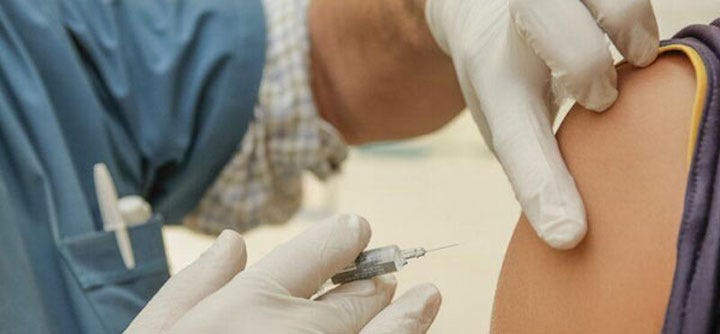
The COVI-19 vaccines were developed rapidly without compromising the scientific process behind them and are part of the solution to this pandemic that has changed our lives. Therefore, there are some key things you should understand about the current rollout process, the different types of vaccines, and what your symptoms may be like.
First, it is important to understand some basic rollout information. Vaccine distribution has been very efficient over the past couple of weeks under the new presidential administration in America. President Biden’s initial goal was to have 1 million people vaccinated a day, in order to get 100 million vaccines out in his first 100 days. However, the current rate of vaccinating people across the country has been faster than this and President Biden has revised this goal to 1.5 million vaccines a day. To put this in perspective, there are 328 million people in America so it should take 218 days total (7 months) to vaccinate the entire nation at this rate. This is a good sign that we can end this pandemic soon since herd immunity will start to develop a couple of months into this vaccination process. This also means that you, my readers, will probably be getting vaccinated very soon or have already been vaccinated. The chart below compares and contrasts the four vaccines, one of which you may receive, and what they are about with data from Boston Globe Media, Politico, and CIDRAP.
One thing you will notice right away is that the Pfizer and Moderna vaccines have been more effective in trials than the Johnson and Johnson and AstraZeneca vaccines. Part of this is because the Johnson and Johnson and AstraZeneca vaccines are DNA vaccines, while the other two are mRNA vaccines. DNA vaccines are made of killed genetic information of the virus and teach the immune system how to respond to the DNA of the virus directly. mRNA vaccines on the other hand are made of single-stranded messenger RNA molecules, which are used in carrying the information from the DNA to the protein-making ribosomes in a cell. The vaccine uses the mRNA to create spike proteins in the human cells; these proteins are the part of the COVID-19 virus that penetrates and infects the cells. However, no other part of the COVID-19 virus is injected into the human cells - unlike in the DNA vaccine. mRNA vaccines are more effective than DNA vaccines in developing immune responses, but they are also less robust. DNA vaccines can be stored at refrigerator temperatures while mRNA ones need super freezers. This is because the double-stranded structure of DNA and the presence of deoxyribose sugar (RNA has a ribose sugar instead) in its backbone makes it a more stable molecule than RNA. The different structures can be observed in the image below. DNA is also a more permanent molecule than mRNA - which is a temporary messenger molecule in cells - and is less prone to degradation. This makes the transport and storage of DNA vaccines more effective in the distribution process, making them an attractive option.

Additionally, the effectiveness of only one dose of the Johnson and Johnson vaccine has currently been tested. The first dose of a vaccine typically exposes your body to the virus and the second strengthens the immune system response for it, which is why the Moderna and Pfizer vaccines are currently administered in two doses. Johnson and Johnson’s vaccine is still being tested for its effectiveness in 2 doses but its high rate of success in just one dose is promising. A one-dose vaccine is much easier to administer than a 2 dose one, making the Johnson and Johnson vaccine still a desirable option despite its lower rate of effectiveness.
Another important takeaway is that the COVID-19 vaccines are currently not approved for children. Testing of all the vaccines on minors 12 years of age on and above in trial groups is currently underway. Testing of these vaccines on new variants from South America and Europe is also ongoing, as these variants prove more robust and infectious than the original versions of the virus these vaccines were made for. Testing of the Moderna vaccine in smaller doses is also occurring to cut down from the high dosage of 100 micrograms currently used.
It is also important to learn about the symptoms of the vaccine before you receive it. Most often you will just feel some soreness in your arm, but fatigue, headaches, muscle pains, and even fever are some other possible side effects. I have received the first dose of the Pfizer vaccine so far and my only symptom was 24 hours of soreness in the arm I was vaccinated in. The soreness didn’t kick in immediately but rather 6 hours after I received the vaccine. My mother has received both doses of the Pfizer vaccine and recounts her and her colleagues’ experiences.
“After the first vaccine, I had about an hour of soreness in the arm I was vaccinated in. The second time the arm soreness lasted longer, for about 2 days. Most of my colleagues also had temporary arm soreness both times, but about half of my colleagues had fever and chills after receiving the second dose.”
Your symptoms may be different, but overall, knowing about the different types of vaccines and people’s experiences with them can better prepare you for your COVID-19 vaccination. Continue to stay informed about your local rollout procedures and make sure to get vaccinated when it is your turn!




